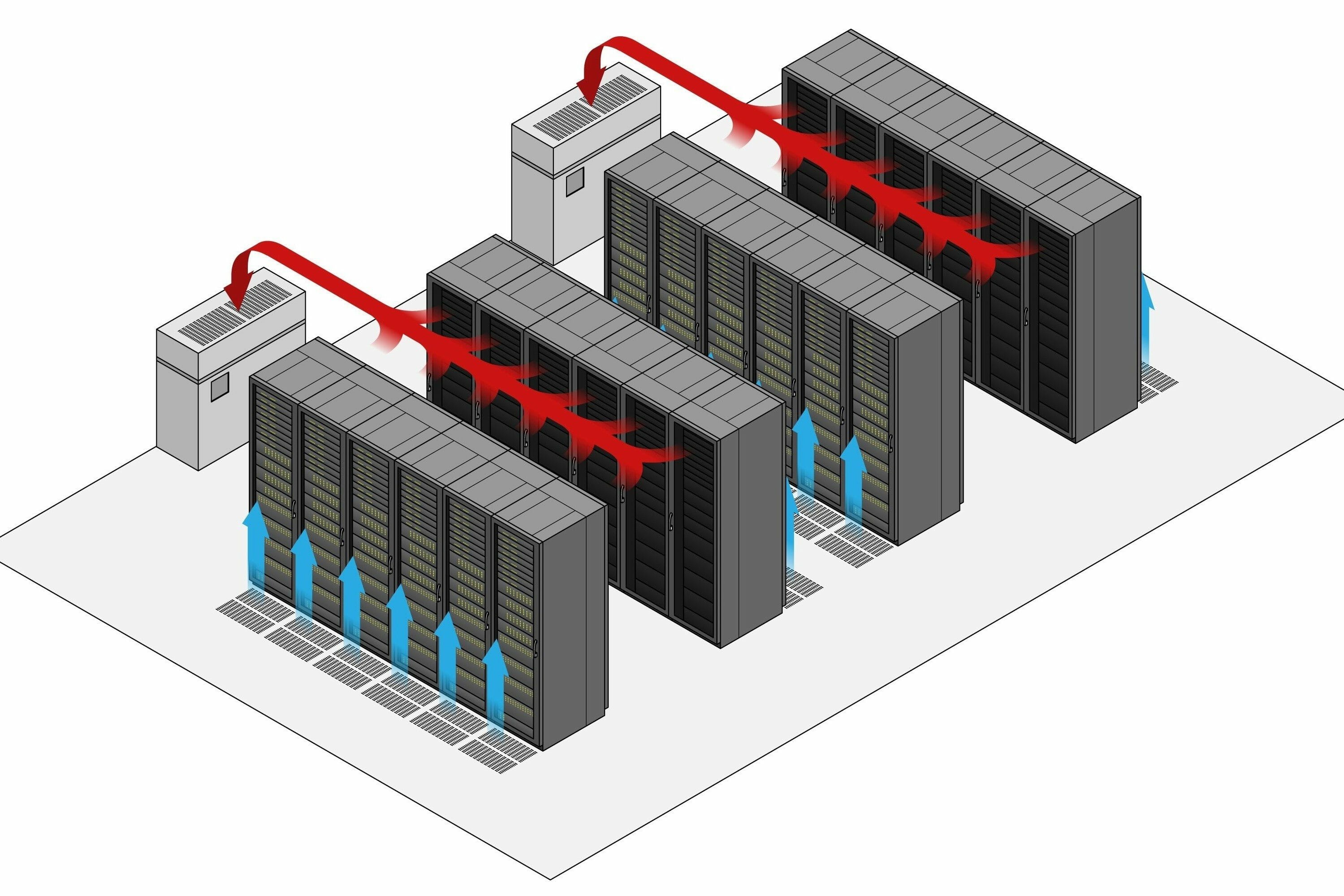Helping Your Data Center Breathe Easier With Good Air Flow Management11 min read

The modern data center currently supports the critical operations of the modern organization, government entity, and even cloud provider. New business demands are helping shape the way we leverage critical resources and further our dependency on data center technologies. At the very top, CIOs and business leaders see the very real benefits of leveraging technology as an enablement tool for their use and business practices. In fact, a recent WSJ article points out that CIOs are knitting together a new IT architecture that comprises the latest in public cloud services with the best of their own private data centers and partially shared tech resources. Demand for the so-called hybrid cloud is growing at a compound rate of 27%, far outstripping the growth of the overall IT market, according to researcher MarketsandMarkets.
Gartner further elaborates by saying that the use of cloud computing is growing, and in 2016 this growth will increase to become the bulk of new IT spend. For many organizations, this will be a defining year for cloud as private cloud begins to give way to hybrid cloud, and nearly half of large enterprises will have hybrid cloud deployments by the end of 2017. In fact,
Gartner describes cloud computing as a style of computing in which scalable and elastic IT-enabled capabilities are delivered “as a service” using Internet technologies. It heralds an evolution of business in positive and negative ways. It has also become a hot industry term that has been used in many contradictory ways.
“Overall, there are very real trends toward cloud platforms, and also toward massively scalable processing. Virtualization, service orientation and the Internet have converged to sponsor a phenomenon that enables individuals and businesses to choose how they’ll acquire or deliver IT services, with reduced emphasis on the constraints of traditional software and hardware licensing models,” said Chris Howard, research vice president at Gartner. “Services delivered through the cloud will foster an economy based on delivery and consumption of everything from storage to computation to video to finance deduction management.”
Let’s pause here for a moment. Yes; this is a long introduction for a conversation around airflow management. But it’s critical to see just how much reliance there is on today’s data center ecosystem. If your data center isn’t performing optimally, your business will potentially lose money, negatively impact operations, and create poor user experiences. Most of all – good airflow management isn’t just about efficiency; it’s about resiliency as well. If your data center can’t breathe; you could face an outage.
Creating good data center management best practices certainly revolves around solid management, good power control, cooling efficiency, and environmental variable controls. A big part of this is airflow management. And so, fitting in with Upsite Technologies’ Airflow Management Awareness Month, let’s look at some great ways to help your data center breathe a little easier.
- Working with Green Data Center Technologies. Green technologies not only help your data center look good, they can also improve overall efficiency and drive down operating costs. Most of all, these green technologies help support an evolving business model.
→ PUE, green initiatives, and the environment – The PUE metric has become a great gauge of data center green efficiency. It’s important to work with a provider that strives to break the 1.25-1.3 barrier or at least one that’s in the +/- 1.2 range. Consider this, Google reports a comprehensive trailing twelve-month (TTM) PUE of 1.12 across all their data centers, in all seasons, including all sources of overhead. This is compared to Uptime Institute’s 2014 Data Center Survey, where the global average of respondents’ largest data centers is around 1.7.
Also, it’s not just about infrastructure efficiency. The entire building can be certified as an environmentally friendly facility – this includes office space. Some data centers now carry the LEED Platinum Certification as the highest mark a facility can obtain today.
→ Containment – There are direct benefits in working with a data center provider which is centric around the environment. Outside of the PUE and LEED certification, internal data center operations can speak volumes as to how green a data center really is. Ensure that air flow is well controlled and that hot/cold aisle containment is deployed by your organization wherever possible. Efficient aisle control, as well as good airflow management, can really help a data center remain environmentally-conscious.
- Incorporating Free Cooling Systems. Today, free cooling is virtually mandated by the requirements of ASHRAE 90.1 – 2010. Did you also know that free cooling helps save energy and will pretty much be deployed within all data center environments? Gartner goes on to define free cooling as any technique used to reduce the energy consumed by cooling systems or the time that the cooling units run by using the outside temperature of air or water to cool the data center or other facilities. Generally, it comes from the use of air-side and water-side economizers. From there, air-side economizers work in two ways. Mainly, they use direct fresh-air cooling by filtering (and possibly adjusting the humidity of) outside air, which is piped in to cool the data center. In cold climates, it may even be warmed by the hot air being expelled, so as not to be too cold. Air-side economizers can also work without bringing direct air into the data center but by heat transference from warmer inside air to cooler outside air.
→ Remember, there are big pluses to deploying an efficiency cooling system. A recent study shows how the advantages of a 100% free cooled data center are the savings in air-conditioning equipment and monthly electrical bills for operating air-conditioners. And, you’re also allowing your gear and infrastructure to operate more efficiently.
- Give Your Data Center a Second Lung – Work with Cooling and Airflow Redundancy. Data centers are increasing density, and cooling is critical to keep operations running efficiently. As the AFCOM State of the Data Center report discussed, when we look at cooling, more than 58% indicated that they currently run, and will continue to run at least N+1 redundant cooling systems. Both today and three years from now – 18% will operate a N+2 cooling redundancy architecture. This means that you should be working with redundant cooling and airflow systems. Not only will this help with efficiency, it’ll also keep your data center up during an emergency.Remember, Data center efficiency heavily revolves around cooling and airflow efficiency. As rack heat densities approach and increase above 5kW, holistic cooling optimization technologies are able to offer approaches such as containment systems, cabinets with enhanced sealing features, and energy efficient computer room layouts. Remember, poor airflow and cooling designs expose the data center to:
→ Poor separation of hot and cold air causing loss of cooling effectiveness.
→ Air leaking through cabinets allowing hot air circulation back into equipment inlets instead of flowing into the CRAC units.
→ Airflow obstructions that constrict cooling airflow.
When designing a data center airflow management solution, remember that you’re actually impacting many critical systems. Airflow controls help with power management and help the data center operate at more efficient temperatures. As businesses continue to increase their reliance on the data center ecosystem; and continue to increase density and resource demands – it’ll be even more critical to focus in on design efficiency. A healthy data center helps the organization compete and adjust to quickly changing market demands. Most of all, it helps create real-world competitive advantages by enabling next-generation efficiency and density capabilities.

Airflow Management Awareness Month
Free Informative webinars every Tuesday in June.
0 Comments